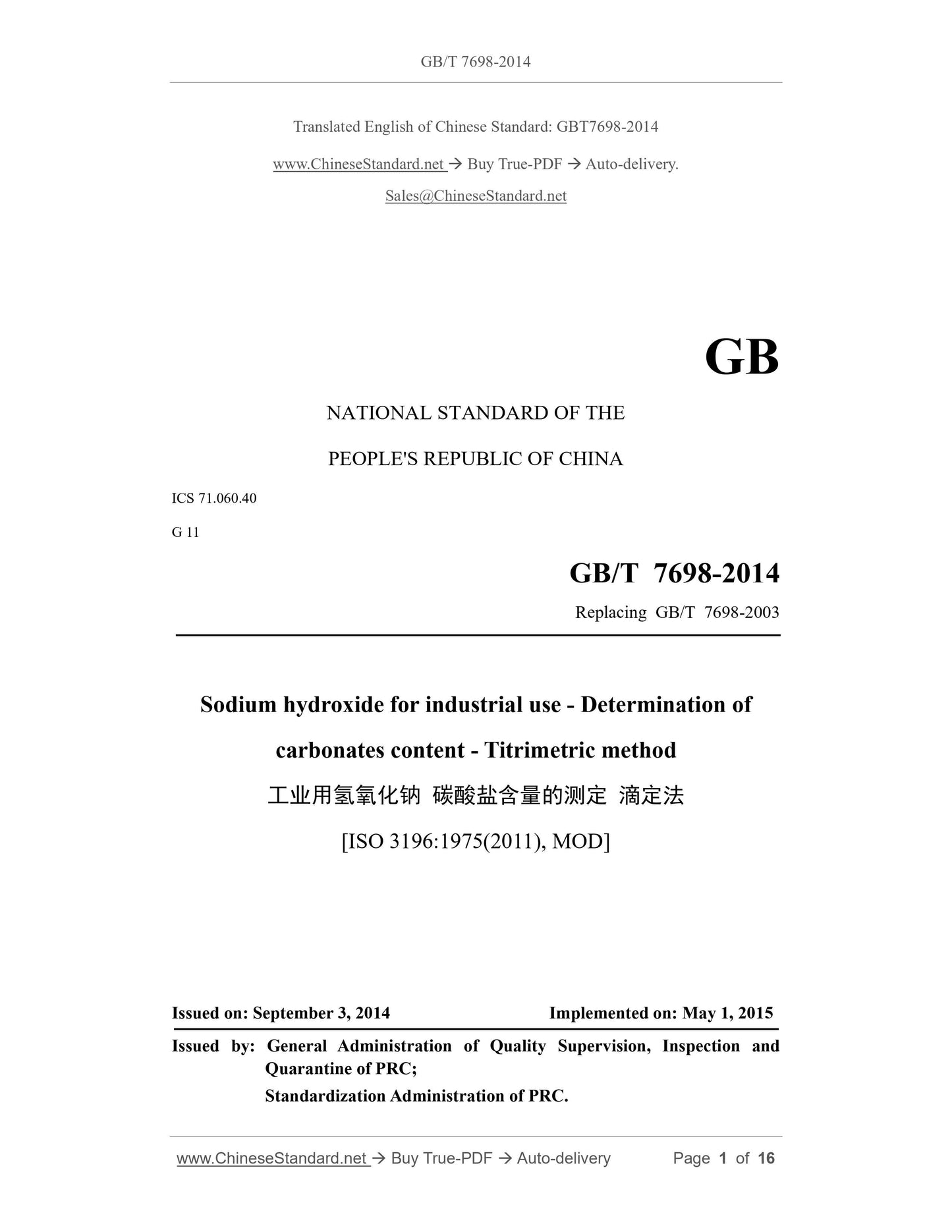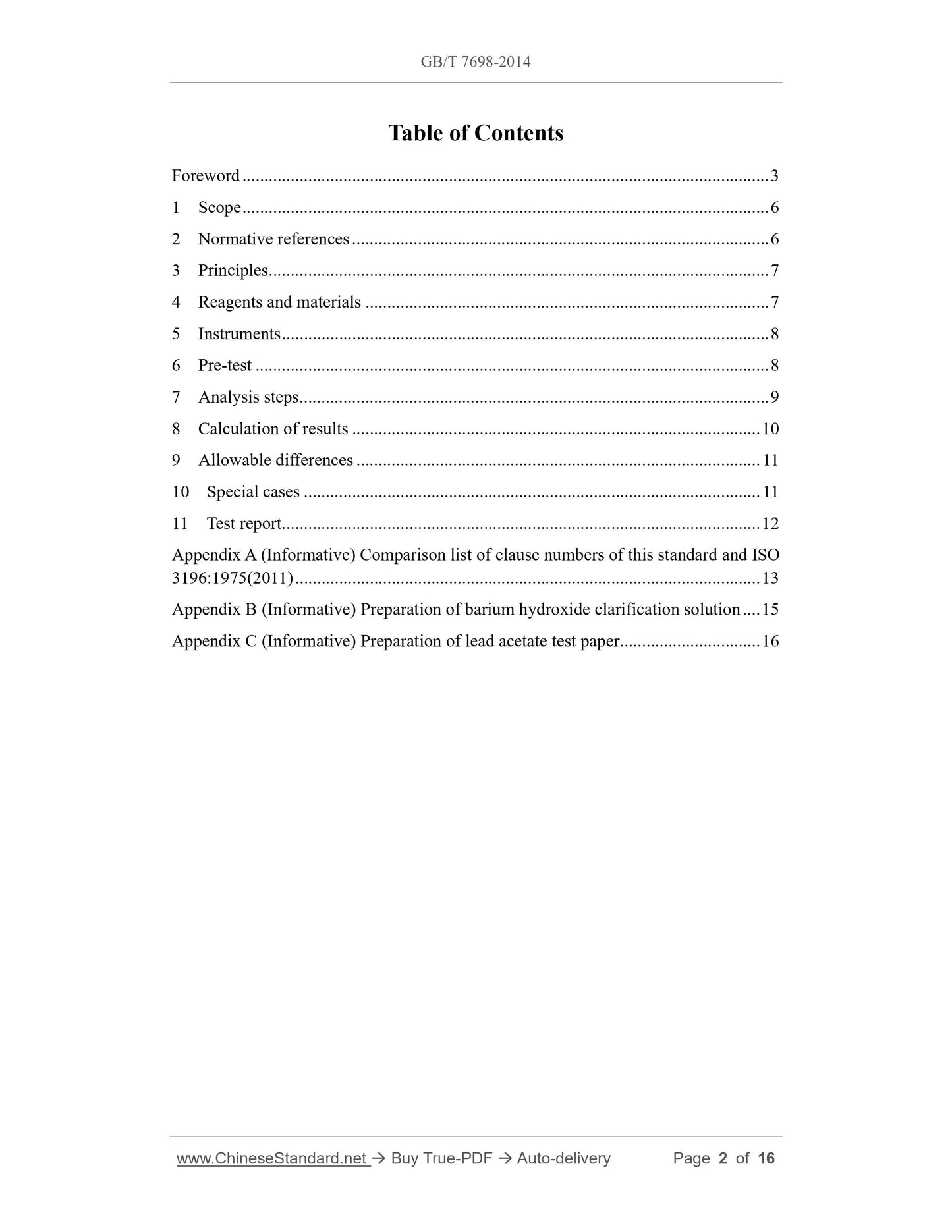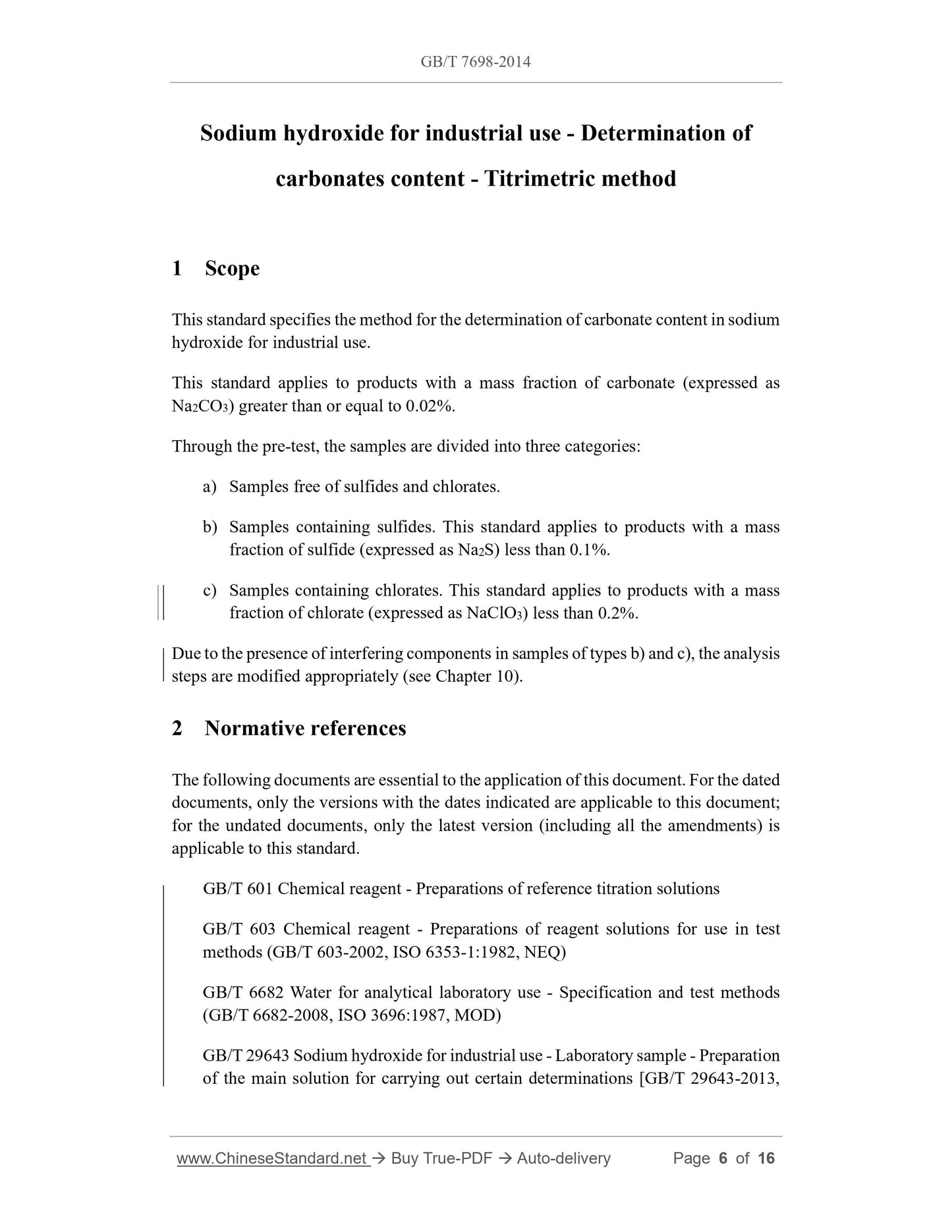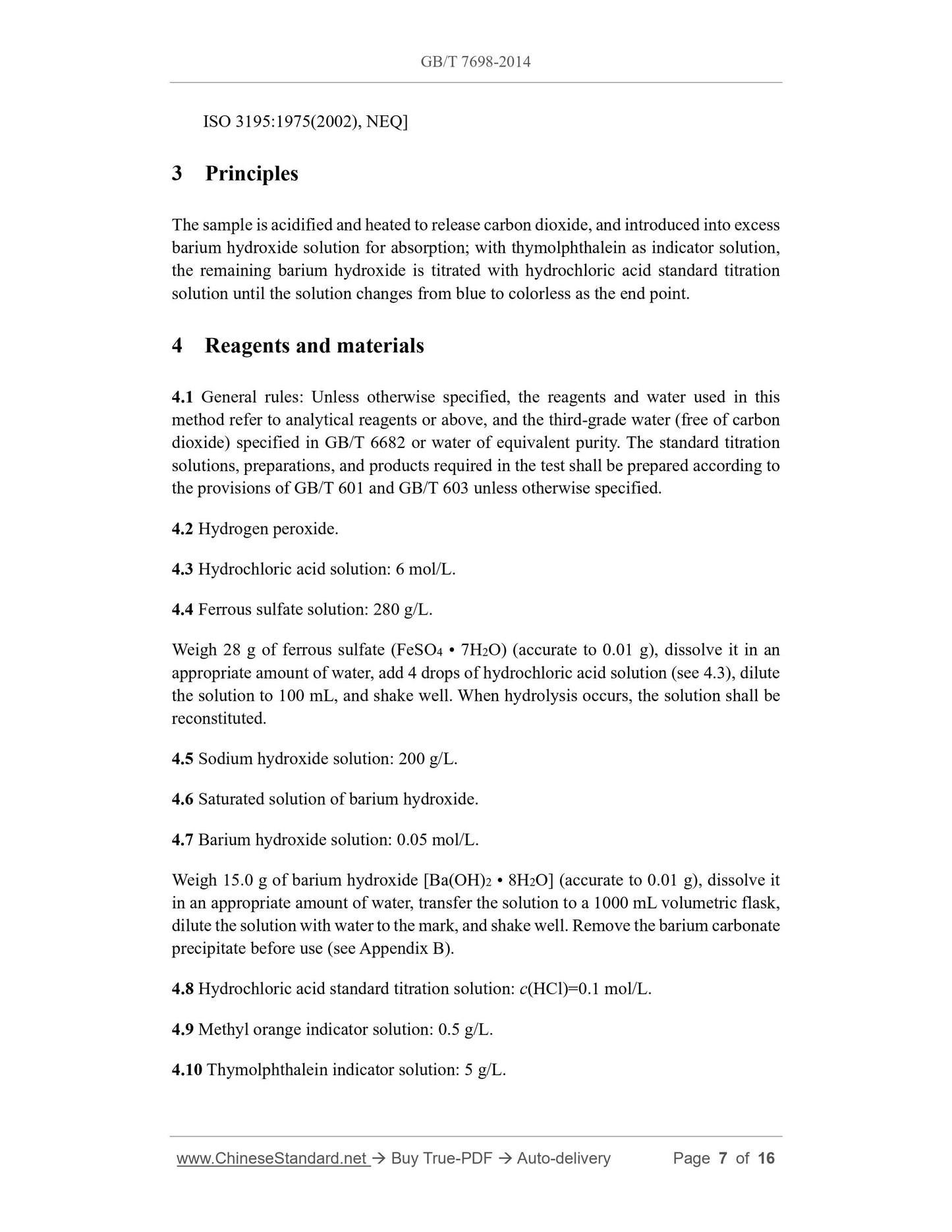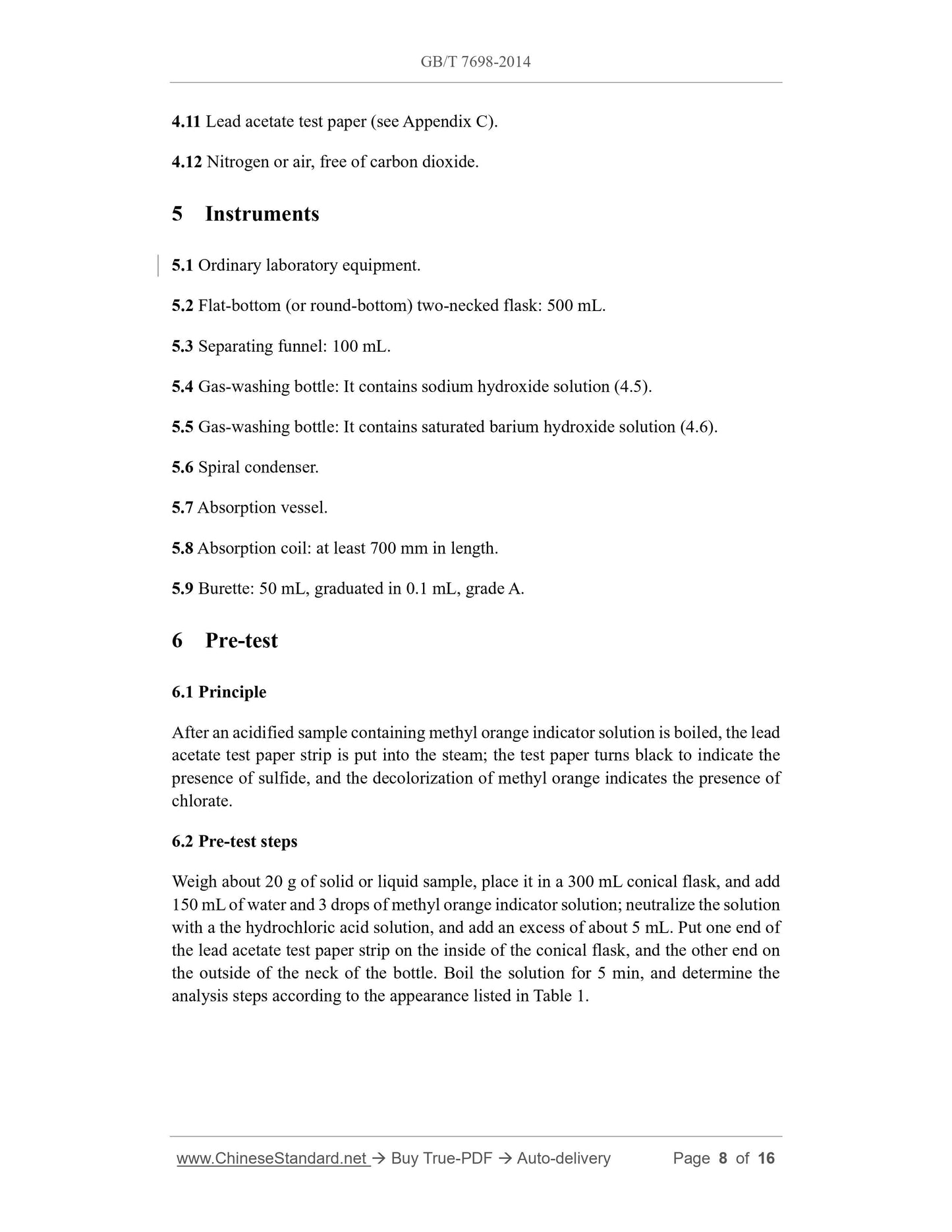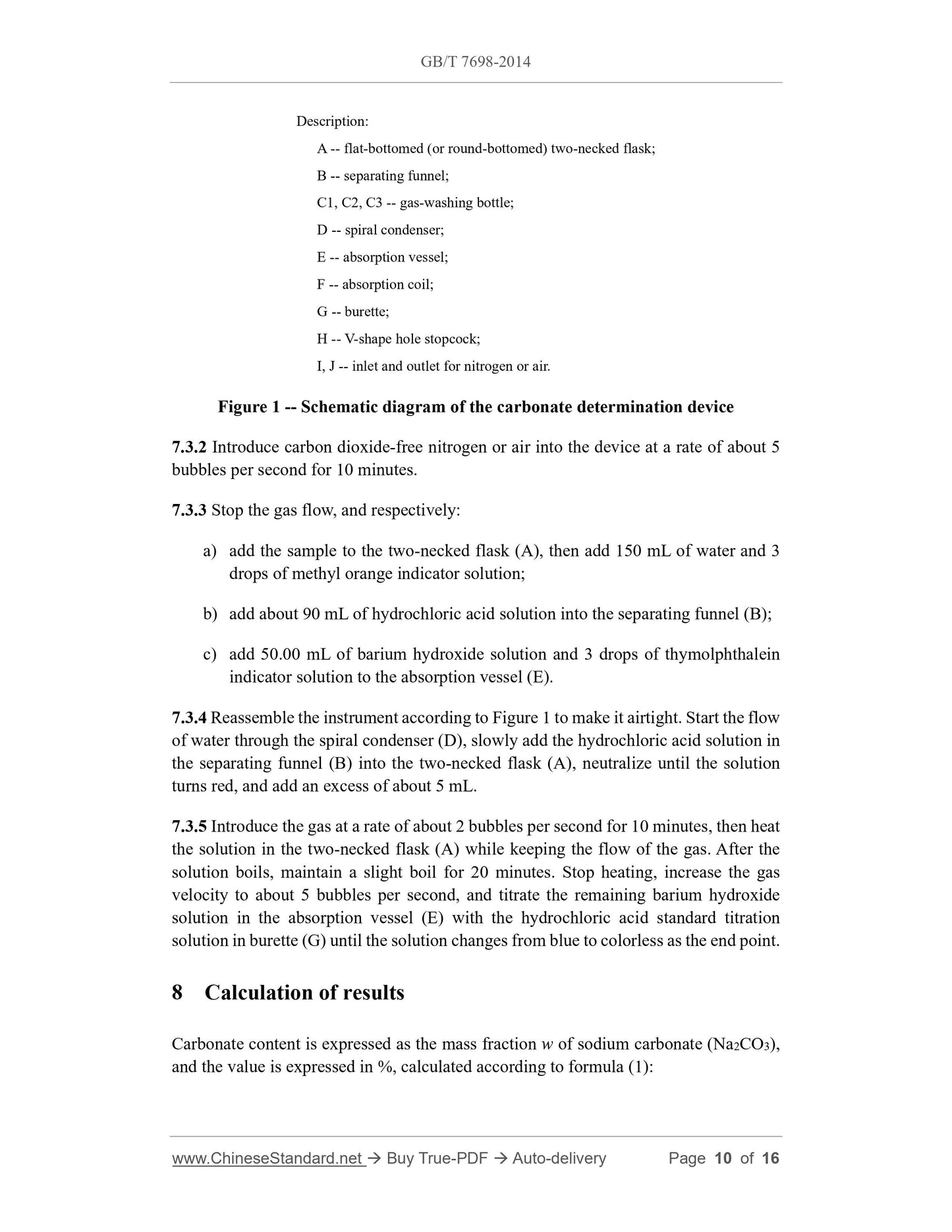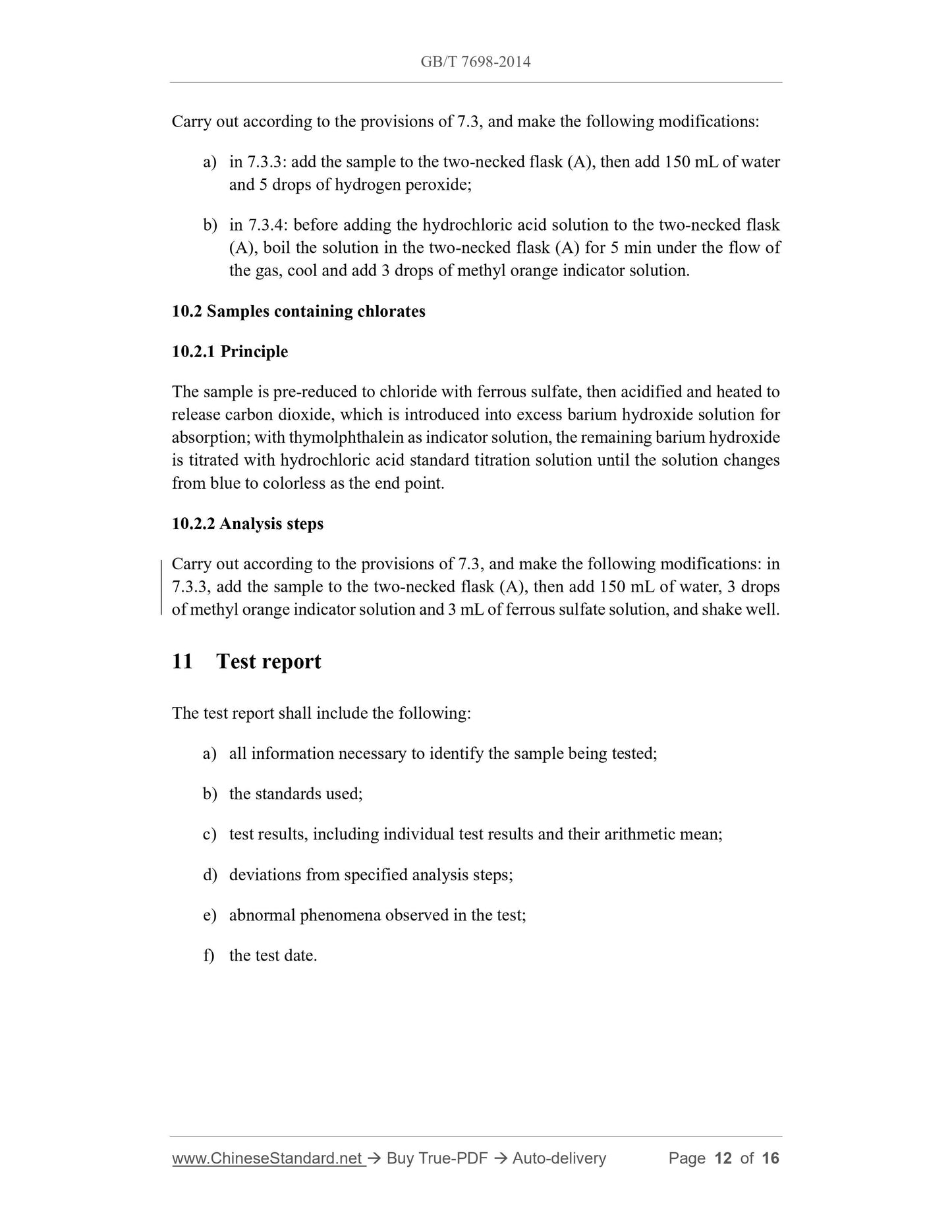1
/
of
7
www.ChineseStandard.us -- Field Test Asia Pte. Ltd.
GB/T 7698-2014 English PDF (GB/T7698-2014)
GB/T 7698-2014 English PDF (GB/T7698-2014)
Regular price
$170.00
Regular price
Sale price
$170.00
Unit price
/
per
Shipping calculated at checkout.
Couldn't load pickup availability
GB/T 7698-2014: Sodium hydroxide for industrial use -- Determination of carbonates content -- Titrimetric method
Delivery: 9 seconds. Download (and Email) true-PDF + Invoice.Get Quotation: Click GB/T 7698-2014 (Self-service in 1-minute)
Newer / historical versions: GB/T 7698-2014
Preview True-PDF
Scope
This standard specifies the method for the determination of carbonate content in sodiumhydroxide for industrial use.
This standard applies to products with a mass fraction of carbonate (expressed as
Na2CO3) greater than or equal to 0.02%.
Through the pre-test, the samples are divided into three categories:
a) Samples free of sulfides and chlorates.
b) Samples containing sulfides. This standard applies to products with a mass
fraction of sulfide (expressed as Na2S) less than 0.1%.
c) Samples containing chlorates. This standard applies to products with a mass
fraction of chlorate (expressed as NaClO3) less than 0.2%.
Due to the presence of interfering components in samples of types b) and c), the analysis
steps are modified appropriately (see Chapter 10).
Basic Data
| Standard ID | GB/T 7698-2014 (GB/T7698-2014) |
| Description (Translated English) | Sodium hydroxide for industrial use -- Determination of carbonates content -- Titrimetric method |
| Sector / Industry | National Standard (Recommended) |
| Classification of Chinese Standard | G11 |
| Classification of International Standard | 71.060.40 |
| Word Count Estimation | 12,123 |
| Date of Issue | 9/3/2014 |
| Date of Implementation | 5/1/2015 |
| Older Standard (superseded by this standard) | GB/T 7698-2003 |
| Quoted Standard | GB/T 601; GB/T 603; GB/T 6682; GB/T 29643 |
| Adopted Standard | ISO 3196-1975, MOD |
| Regulation (derived from) | People's Republic of China Announcement of Newly Approved National Standards No. 21 of 2014 |
| Issuing agency(ies) | General Administration of Quality Supervision, Inspection and Quarantine of the People's Republic of China, Standardization Administration of the People's Republic of China |
| Summary | This Standard specifies Industrial sodium carbonate determination method used. This Standard is applicable to carbonate (Na2CO3 in dollars) of the mass fraction of greater than or equal to 0. 02% of the product. By pre-test, the sample is divided into thr |
Share
